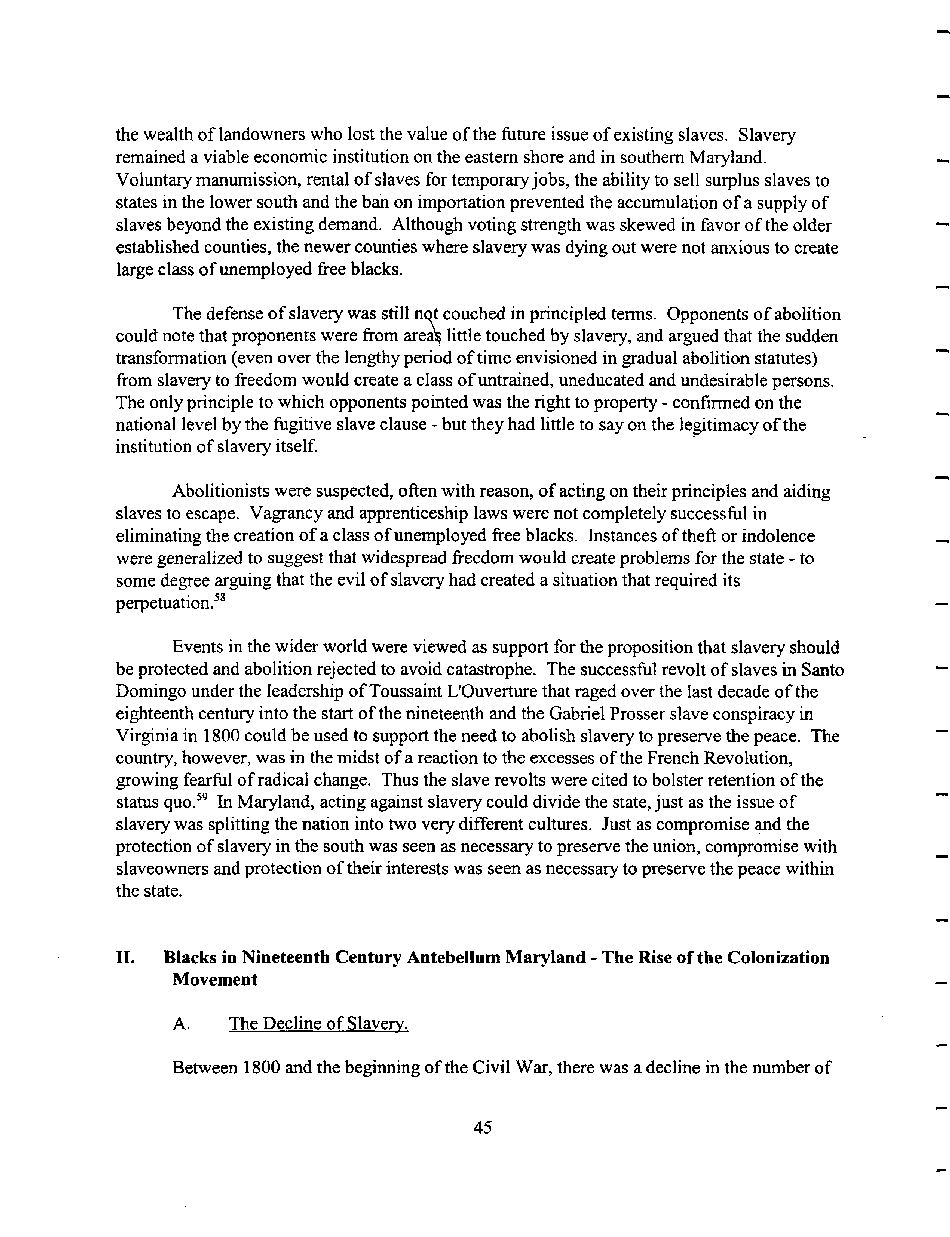|
the wealth of landowners who lost the value of the future issue of existing slaves. Slavery
remained a viable economic institution on the eastern shore and in southern Maryland.
Voluntary manumission, rental of slaves for temporary jobs, the ability to sell surplus slaves to
states in the lower south and the ban on importation prevented the accumulation of a supply of
slaves beyond the existing demand. Although voting strength was skewed in favor of the older
established counties, the newer counties where slavery was dying out were not anxious to create
large class of unemployed free blacks.
The defense of slavery was still not couched in principled terms. Opponents of abolition
could note that proponents were from area\ little touched by slavery, and argued that the sudden
transformation (even over the lengthy period of time envisioned in gradual abolition statutes)
from slavery to freedom would create a class of untrained, uneducated and undesirable persons.
The only principle to which opponents pointed was the right to property - confirmed on the
national level by the fugitive slave clause - but they had little to say on the legitimacy of the
institution of slavery itself.
Abolitionists were suspected, often with reason, of acting on their principles and aiding
slaves to escape. Vagrancy and apprenticeship laws were not completely successful in
eliminating the creation of a class of unemployed free blacks. Instances of theft or indolence
were generalized to suggest that widespread freedom would create problems for the state - to
some degree arguing that the evil of slavery had created a situation that required its
perpetuation.58
Events in the wider world were viewed as support for the proposition that slavery should
be protected and abolition rejected to avoid catastrophe. The successful revolt of slaves in Santo
Domingo under the leadership of Toussaint L'Ouverture that raged over the last decade of the
eighteenth century into the start of the nineteenth and the Gabriel Prosser slave conspiracy in
Virginia in 1800 could be used to support the need to abolish slavery to preserve the peace. The
country, however, was in the midst of a reaction to the excesses of the French Revolution,
growing fearful of radical change. Thus the slave revolts were cited to bolster retention of the
status quo.59 In Maryland, acting against slavery could divide the state, just as the issue of
slavery was splitting the nation into two very different cultures. Just as compromise and the
protection of slavery in the south was seen as necessary to preserve the union, compromise with
slaveowners and protection of their interests was seen as necessary to preserve the peace within
the state.
II. Blacks in Nineteenth Century Antebellum Maryland - The Rise of the Colonization
Movement
A. The Decline of Slavery.
Between 1800 and the beginning of the Civil War, there was a decline in the number of
45
�
|

